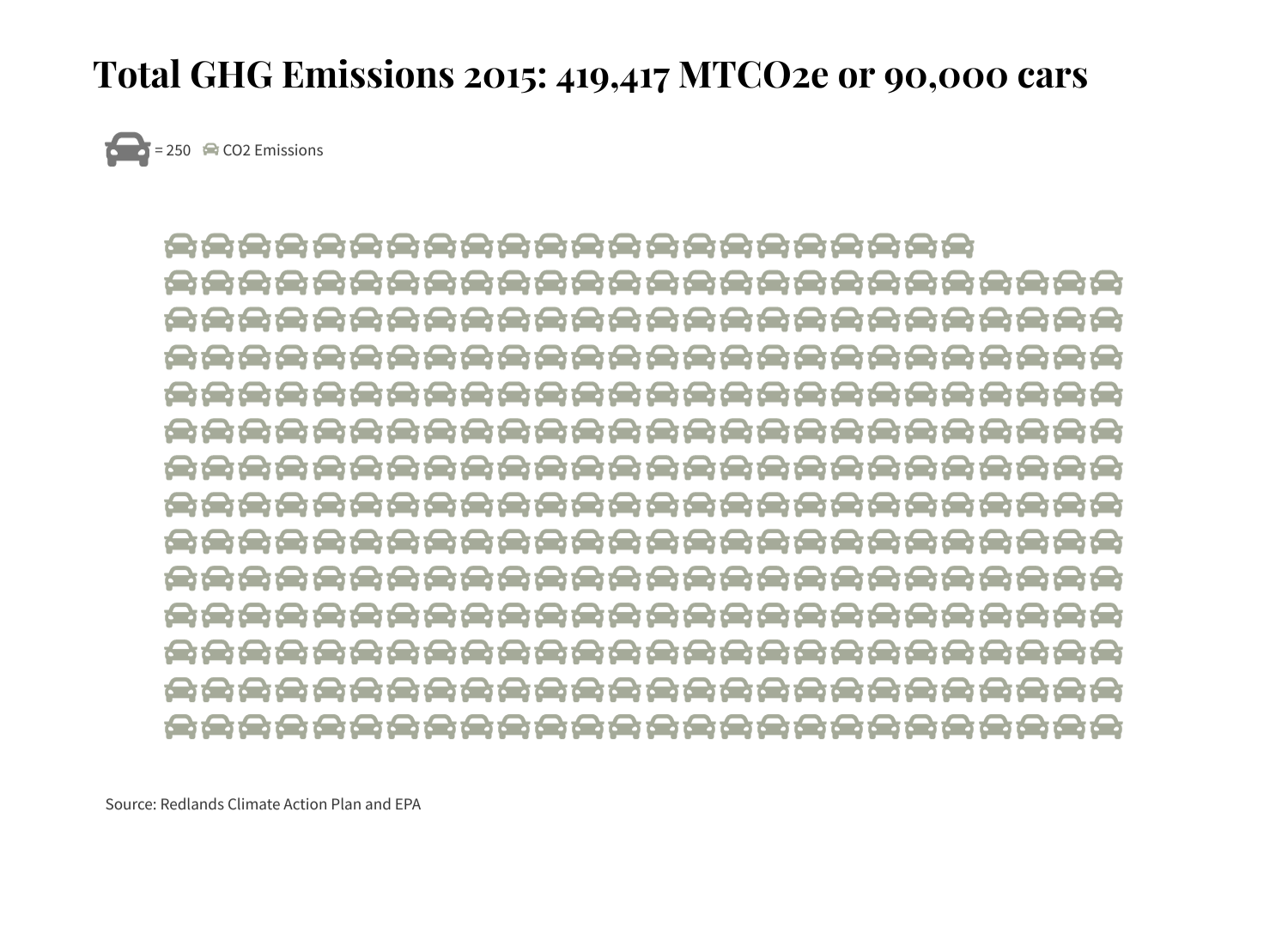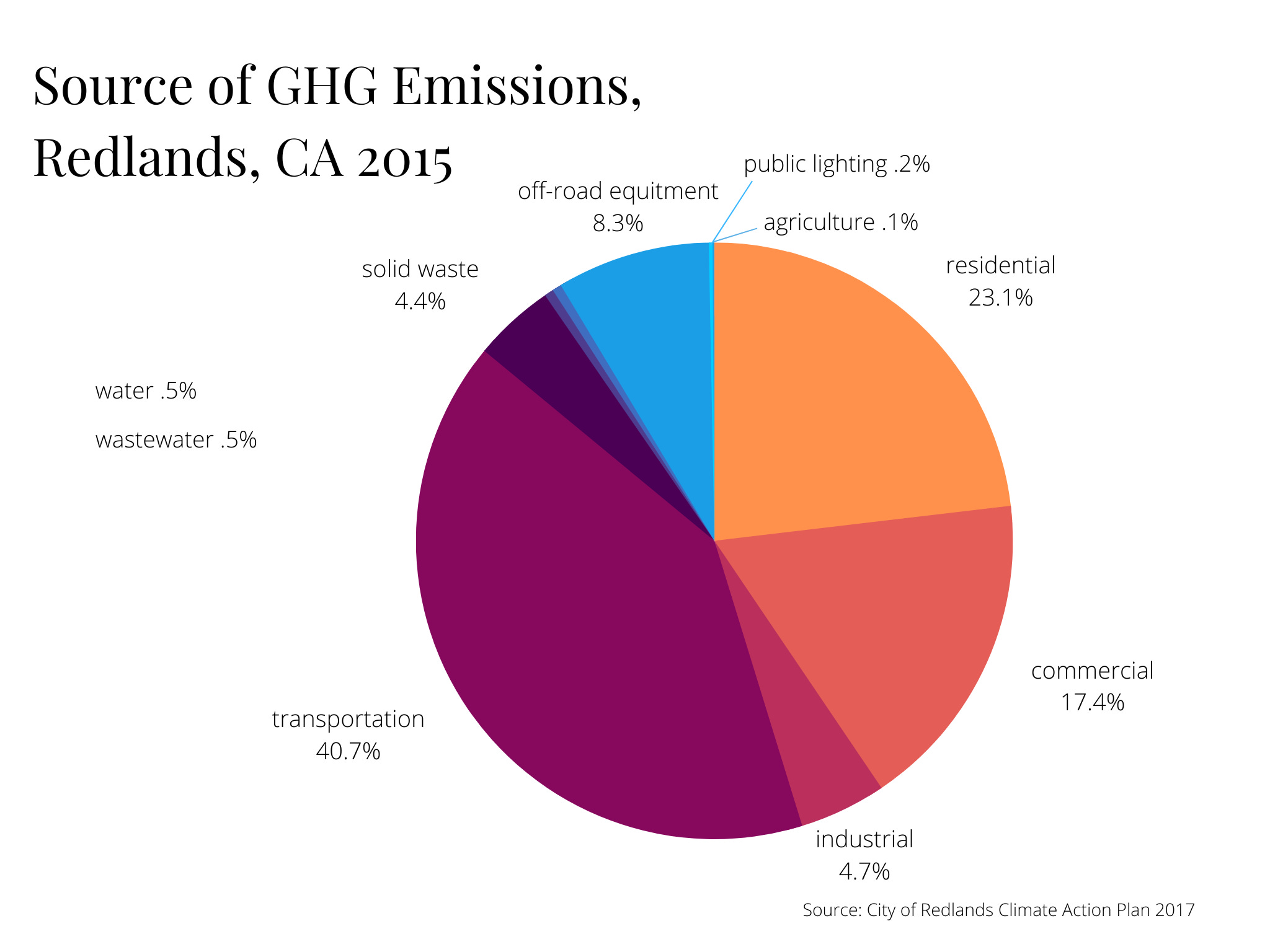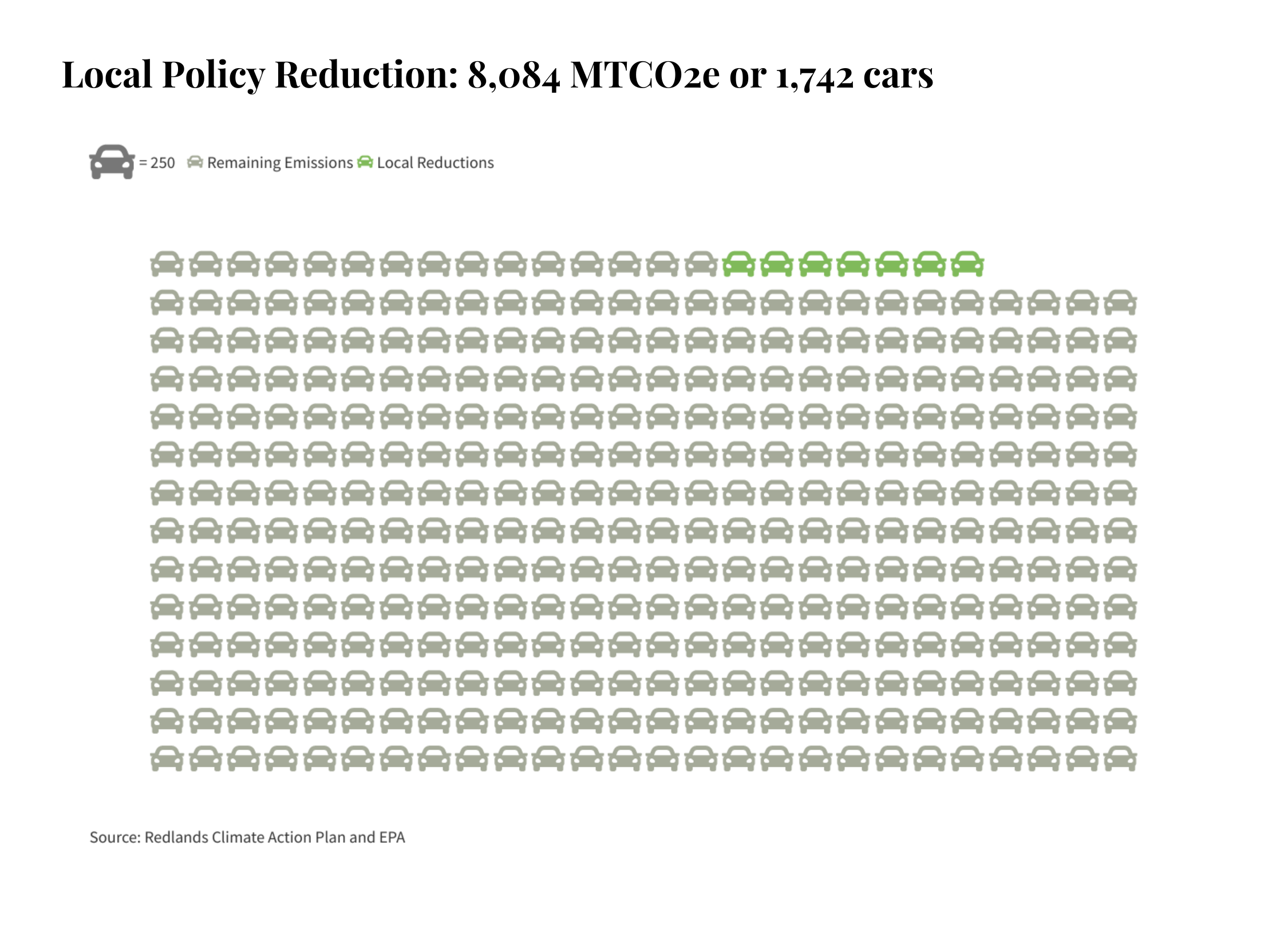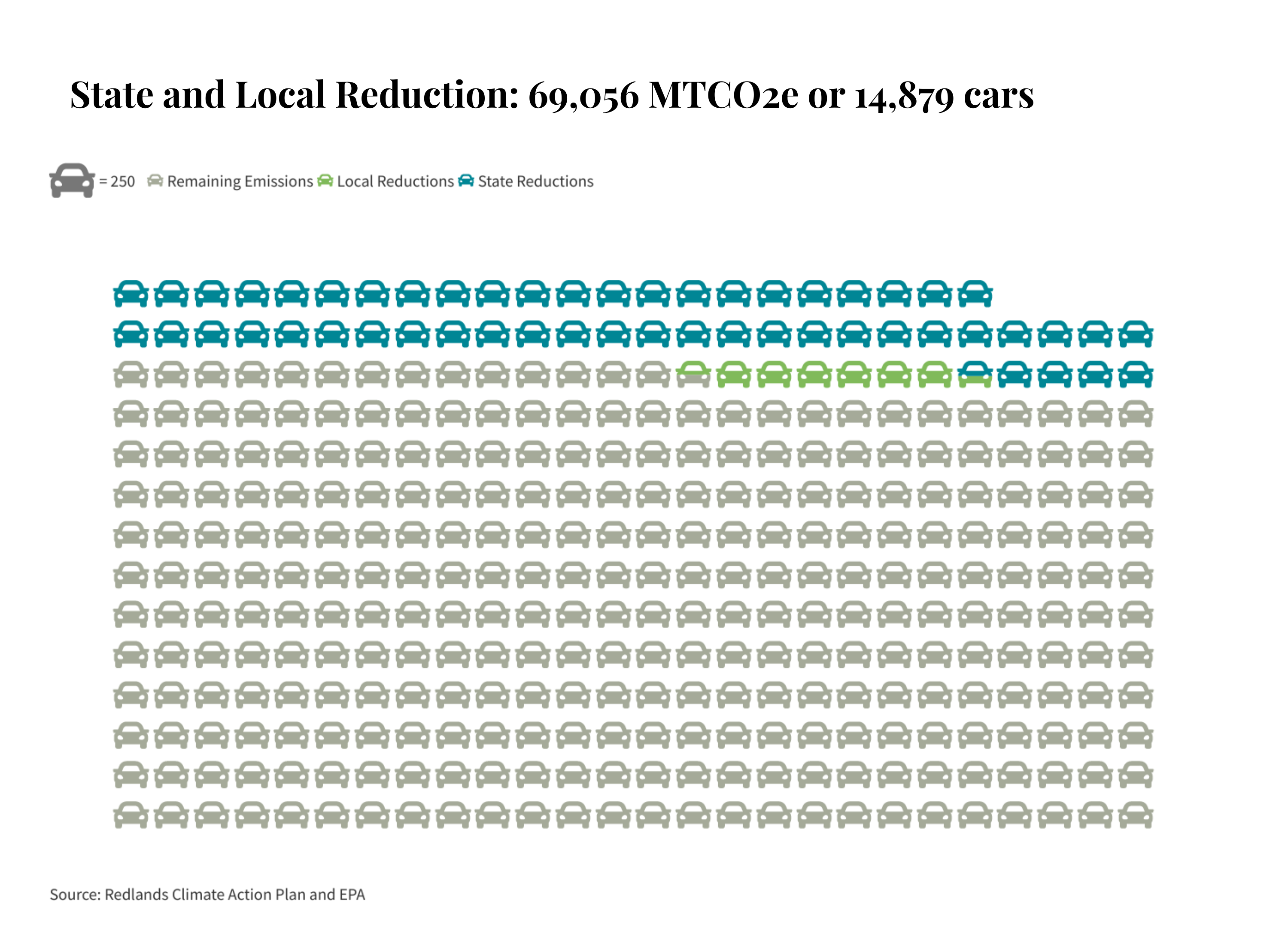RUSD budget reflects state cuts, falling enrollment
The 2025-26 budget shows steady reserves but projects deficit spending.
As State and Federal governments take more drastic measures to mitigate climate change, a look at the City of Redlands' plan to lower greenhouse gas emissions by 2035.

This is Part 2 on a series examining resilience, sustainability and environmental justice in addressing climate change in Redlands. Last week’s newsletter took a deeper look at our city’s canopy cover, its impact on heat and the need for a more equitable distribution of trees.
REDLANDS - This past month brought major developments in the national and state response to the climate crisis. The largest ever federal investment in renewable energy and climate change solutions was enacted on Aug. 16. The Inflation Reduction Act (IRA), while having no significant impact on inflation, opened up $369 billion in federal funding for climate change solutions. Meanwhile, here in California last week, regulators announced a new plan to restrict and ultimately ban gasoline-powered cars by 2035.
As the state and national governments take more aggressive and direct measures to mitigate climate change, we look at what the City of Redlands has planned to address the climate crisis. In 2017, Redlands created a Climate Action Plan (CAP). The CAP evaluates the top causes of greenhouse gas emissions (GHG) in the city and outlines strategies to reduce emissions. The plan includes both local and state action that are projected to lower citywide GHG emissions 17% by 2035.
This newsletter takes a deep dive into Redlands’ 2017 CAP with a look at the projected impact of current local and state policies on emissions. I will also share part of my conversation with Valerie Rountree, Assistant Professor Environmental Studies at the University of Redlands, about how a broader plan to lower greenhouse gas emissions would build a more resilient and sustainable City, and why now might be the opportune time.
The State of California established a target to reduce greenhouse gas (GHG) emissions to 40% below 1990 levels by 2030. As part of the effort, local governments created their own emission reduction policies. Redlands’ Climate Action Plan outlines the amount and sources of GHG emissions in the City in 2015. The plan also explains how state regulations and local policies found in the City’s General Plan will reduce emissions.
Before determining reduction goals, the amount of greenhouse gas emissions in the City must be measured. Metric tons of carbon dioxide equivalent or MTCO2e is the unit of measurement used to determine the magnitude of greenhouse gas within the City boundaries.
In 2015, emissions were measured at 419,417 MTCO2e per year. This is equivalent to approximately 90,000 cars driven for one year. This is the baseline inventory of emissions that state and local policy works to reduce. It’s visualized below with each icon representing 250 cars driven for a year.

The CAP also measures each source of GHG emissions in Redlands. The following areas are considered: residential, commercial, industrial, transportation, solid waste, water, wastewater, off-road equipment, public lighting, and agriculture.
Here’s how it breaks down:

Transportation and homes are the major contributors to GHG in Redlands, accounting for a combined 64% of emissions.
After identifying the sources of emissions, the plan lays out specific policies aimed at reduction. The highest single cause of GHG is transportation at 41%. This includes traffic within the city and travel to and from Redlands.
Policies focus heavily on reducing car emissions within the City, including promoting biking and walking, and providing incentives for shared parking structures. The overall goal is to create a more connected, pedestrian-friendly city.
In total, the policies account for a projected reduction of 8,084 MTCO2e per year.
This local action is equivalent to removing 1,742 cars from the road for one year or 2% of 2015 emissions.

State regulations are responsible for a larger share of projected reduction of emissions in Redlands.
State-wide policies included in the CAP:
The Renewable Energy Portfolio Standard alone is projected to reduce emissions by nearly 50,000 MTCO2e per year by 2035.
In total, the State action results in a projected reduction of 60,972 MTCO2e.
Combined efforts of state and local action result in the equivalent emission reduction of removing 14,879 cars off the road for 1 year or 17% of 2015 emissions.

The Climate Action Plan is not intended to be a one-and-done plan for addressing climate change. Instead it is a foundation of policies and programs that can be built off of and adjusted as necessary.
You can find the 2017 Climate Action Plan here.
After nearly 5 years of technological improvements in energy efficiency and an influx of federal funding, the City’s Climate Action Plan could look much different today.
I talked to Valerie Rountree, Assistant Professor Environmental Studies at the University of Redlands, about what a more robust reduction of emissions might look like in Redlands. Rountree, who is also a member of the Redlands Climate Policy Committee, suggests thinking of climate action holistically. She said, in addition to addressing car emissions, we should consider multiple angles including a bigger push for renewable energy, increase funding for rebate programs to make homes more energy efficient, and using our water resources more wisely.
The recent federal funding towards renewable energy and climate solutions provides an opportunity for cities, such as Redlands, to look for new funding sources and reevaluate their climate action plans.
Rountree said, it’s not just about trying to reduce emissions, it’s also about building resilience to the impacts of a warming planet and adapting to climate change. As explained in last week’s The Shade Divide, Redlands is expected to experience three times as many regional hot days by 2053.
“At the local level, Redlands itself is not going to solve climate change, that does not mean we shouldn’t do anything about it. And I think a lot of the actions that are mitigative - are going to reduce our greenhouse gas emissions - things like denser housing, more efficient buildings, those actually are also adaptation measures,” Rountree explained.
Taking a more expansive approach to carbon emission reduction is about more than meeting a goal. Rountree pointed out that investment in renewable energy will have a positive impact on residents, “by addressing some of these greenhouse gas emissions reduction initiatives we’re also going to clean up our air and improve our community’s health.”
I asked Rountree her thoughts on whether Redlands could one day be a carbon neutral city and she was optimistic about the possibility, “I think if you look just at what is being emitted within the city, yeah I think it’s very realistic.”
A look at the projections and policies in the Climate Action Plan shows there is work to be done.
I’ll share more local policy ideas to increase renewable energy and connectivity in Redlands, including an electric street trolley.
Plus a look into what has been done at the City level to undercut emissions and when to expect another CAP report.
And a detailed look at how the Inflation Reduction Act funding opportunities can accelerate local policies to reduce emissions, expand renewable energy and promote environmental equity.
Climate change action has often been framed as a partisan issue. Yet as global temperatures rise and extreme weather events become more common, more Americans want to see climate change action.
But, Americans need some convincing that the support is really there. A new study published in Nature last week, found that most people have a “false social reality” around climate change concerns and mitigation. Most people underestimated their fellow American’s support of climate policy.
The study found that 80-90% of Americans believe the support for climate change policy is only 37-43% on average. The study concludes “supporters of climate policies outnumber opponents two to one (66% support), while Americans falsely perceive nearly the opposite to be true.”
So go ahead and share this article, your friend will, more likely than not, be interested.
Sign up for our weekly newsletter